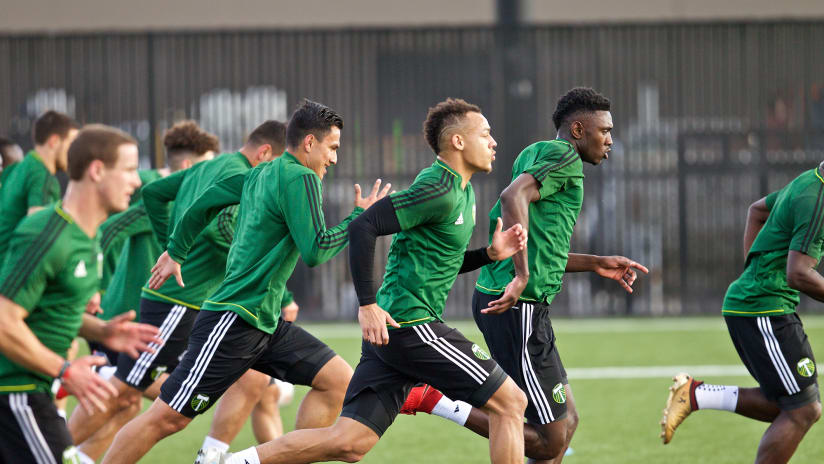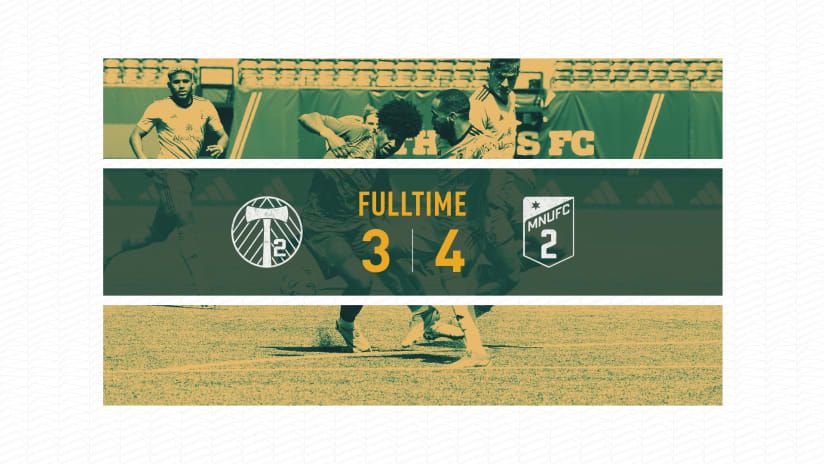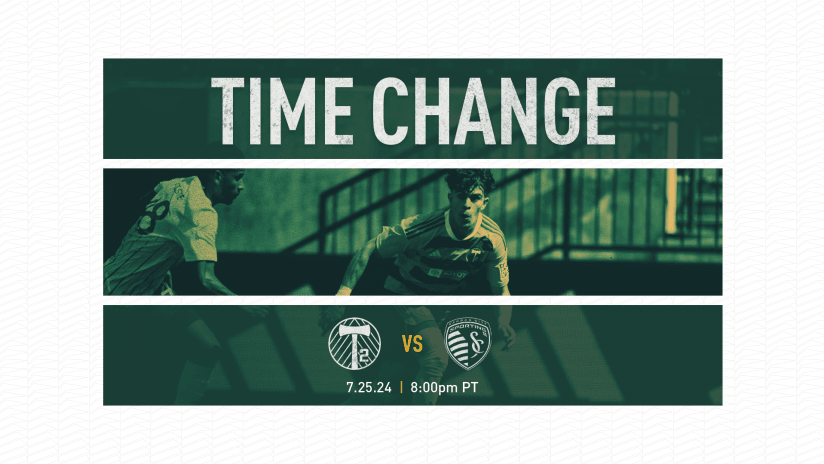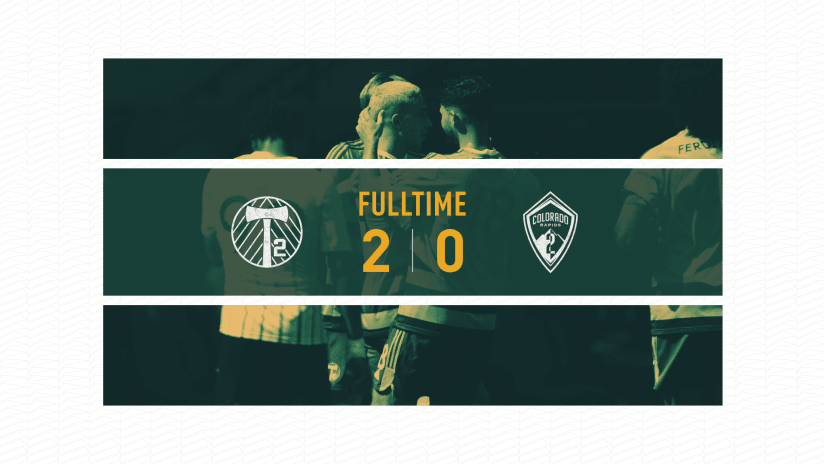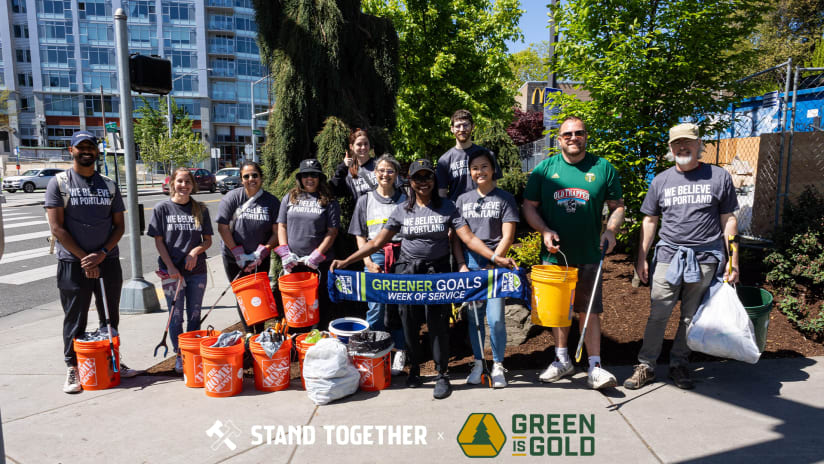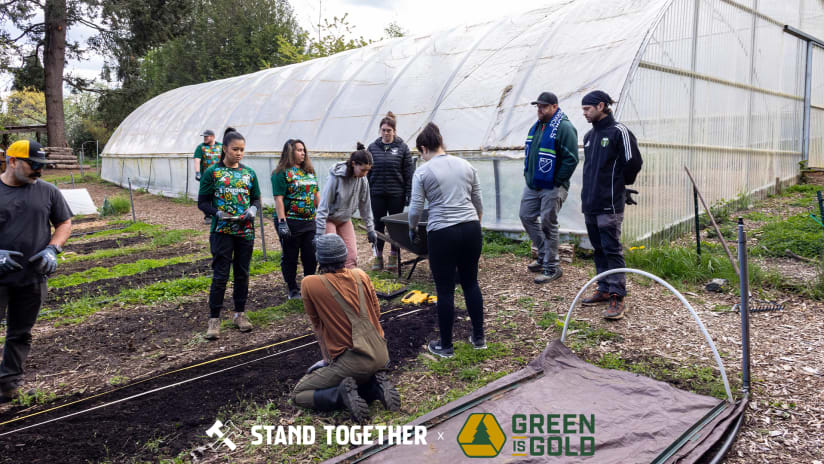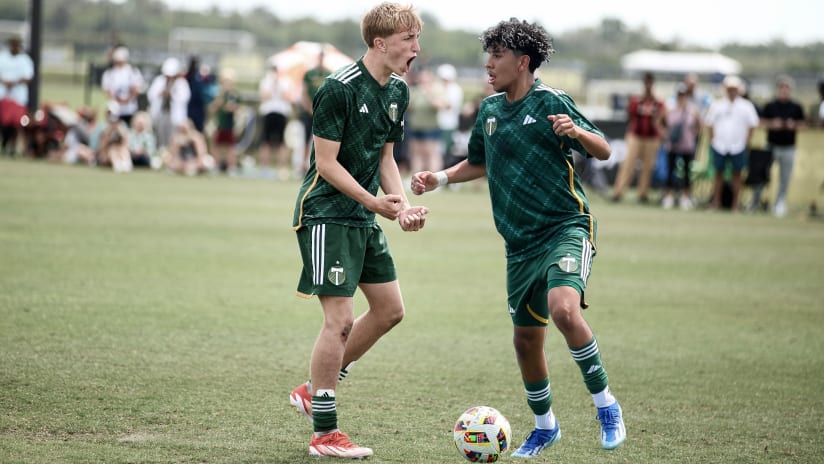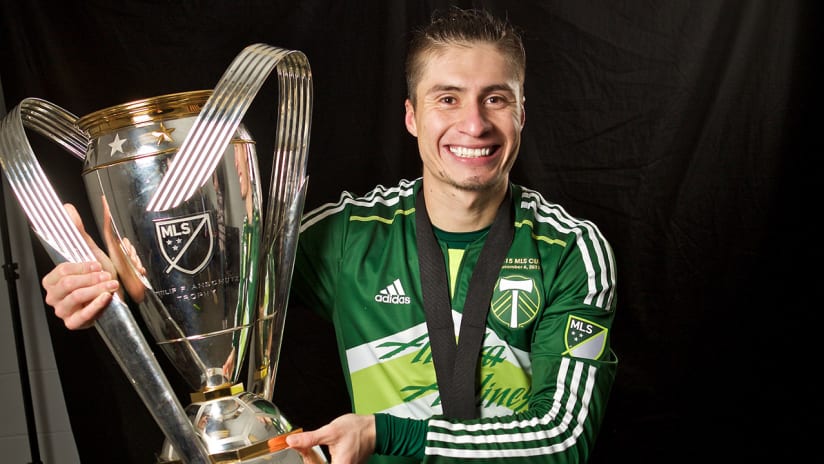BEAVERTON, Ore. –The day before Cameron Knowles’ first game as a head coach, a new injection of talent arrived for T2, one that extended far beyond the typical level you see in the United Soccer League. One was a recent fourth overall pick in the MLS SuperDraft; another was a high profile Homegrown Player; a third had played with Chilean giant Colo-Colo; and a final had been one of the leading figures on a recent MLS Cup-winning team.
It’s all far less dramatic than it sounds. Rather than arriving as part of an unexpected gold rush, Jeremy Ebobisse, Eryk Williamson, Modou Jadama and Diego Chara had merely crossed the 15 feet of pavement that separates the Portland Timbers’ main practice field from the one T2 use at the adidas Timbers Training Center. Not scheduled to travel with the organization’s MLS team that week, the four first-team talents were sent to play for T2, eventually doing so the next night when the team beat the University of Portland, 3-1, in an exhibition at Merlo Field.
“Jack Barmby, Victor Arboleda, Eryk Williamson, Jeremy Ebobisse,” general manager Gavin Wilkinson says, listing out some of the first-term depth that, based on what Giovanni Savarese’s depth chart at any given time, could see time with T2. “We’ve got the [Bill] Tuilomas, the [Julio] Castcantes, all players who are in positions in key areas within the club.”
Last week, Wilkinson went out and signed two internationals specifically for T2: Honduran attacker Darixon Vuelto and Costa Rican wideman Marvin Loría. In time, the club’s new Central American talents will be expected to contribute to the first team. But as they transition into North American soccer, T2 will be their home.
Is it possible, after such a difficult 2017 season that saw the team win three games, that T2 could actually have turned a corner?
This is how it was always supposed to be for the Timbers’ USL affiliate, but for whatever reason, it’s rarely been the case. Players have gone back and forth between the first and second teams, but usually it was because of an injury crisis, like the one that befell the Timbers before last year’s U.S. Open Cup match against Seattle. Those situations have been exceptions, though, and they’ve usually only involved T2 as an emergency resource for the MLS club. The theory of players who lack first team time becoming consistent options for T2? It had yet to take consistent hold.
That, among other reasons, explains the USL team’s embarrassing 2017. Winning only three times in 34 games, T2 was at an early nadir, with a sense of ennui surrounding the Timbers’ second team only three years after its birth.
“It’s a constant reminder to us, as a collective staff, and a constant reminder to the players that are playing that it’s not acceptable,” Wilkinson says of the branding that comes with a three-win season. “In order to be a part of this club long-term, T2 has to have success.
“The ambition for T2 is to create a pathway for young players to the first team, but it also has to be successful in its own right, and there’s enough talent on T2 to make the playoffs. There’s enough talent on T2 to play the way that the first team plays. There’s enough talent to win games.”
From the top of the organization down, Portland knew things had to change, both in terms of the commitment to T2 as well as its integration with the first team. When a first team has the talent to finish top of the Western Conference, that, ideally, would have a knock-on effect to T2. If anything, and counterintuitively, the chasm between the first team and second has grown as the clubs MLS fortunates have improved.
Now, the talent in the first team is better than it’s ever been, both at the top of the depth chart and throughout its bench. That not only means competition for spots is more intense than ever but, ultimately, minutes will be more difficult to win. And if the past history is any indication, some players who miss out on first-term time will be the younger generation - players who, still needing development, require an outlet like a USL club.
That’s why there’s a new focus on the cohesion between Portland’s MLS and USL clubs. With a new first-time head coach in Knowles, there’s a chance to reset what the vision for T2. And for Savarese, having a strong second team is part of a more complete, cohesive club.
“The change with Gio coming helps create a new starting point for the players in T2,” Knowles says, “because it’s that mentality of every game is important, there is no easy game. The expectation is to win and give your all, and we’ve got to bring that not just from the first team, but we’ve got to be reflected throughout the club.”
It’s a view that Wilkinson has mandated throughout the club.
“For me, part of the development of a professional player is taking the responsibility of having to win and understanding that comes with a little bit of pressure,” the Timbers GM says. “Last year, we didn’t get the balance right. This year, we have invested in a little bit more quality. There’s more of an investment in the overall staffing. We have invested more in other areas, too. We expect that to pay dividends.”
That mentality builds on one of Knowles’ prime assets: his connection to the club. As a former USL Timbers player (before Portland joined MLS), the former Real Salt Lake draft pick has long been a part of Portland’s organization, originally joining head coach John Spencer’s staff in 2012 and continuing with the team under Caleb Porter.
Only 35, Knowles now has first head coaching job, one the organization sees as a development opportunity for him in addition to his players.
“He’s been a part of this club for a long time, and he’s a talented coach,” Wilkinson said. “This is a chance for him to go into that environment and claim it as his, and develop and work with it. It also gets him experience with the day-to-day grind of being a head coach. It’s all the little parts of being a head coach that will be important for him.”
This is not your typical head coaching position, though. While T2 will be expected to be far more competitive than it was a year ago, the team’s goals also involve its fit into a pipeline. The approach, style, and decisions the team will undertake must all fall in line with the first team’s vision.
After last year, though, it’s been made clear: Winning is part of that vision. There iss no vision for a successful organization where the second team that isn’t playing winning soccer.
“What we’ve got to impart on the players is, listen, it’s not just development, development,” Knowles explains. “Development isn’t at the cost of results. We need to win games, as well. Winning games is part of development.
“Learning games. Finding how to win, so we’re trying to create the right mentality … The idea of earning the right to play on the field every game, where if you can match the effort of the team every game, your quality will get a chance to shine through.”
For Knowles, that process begins Friday in Seattle against Sounders FC 2 (7pm PT, Stream at Timbers2.com), an opening game that T2’s new boss wants his players to treat with the gravity a Portland-Seattle derby demands.
“There’s probably no better yard stick to measure ourselves than that first game of the season,” Knowles admits. “You go up to Seattle and you get a taste of what it’s supposed to be.
“The biggest games are always against our rival to the north … that’s a massive game, and hopefully, we can set the tone for a new start in that game.”
Knowing the Seattle rivalry is part of what being a Timbers player is about, context should also explain why a three-win season is so unacceptable. Now, with Knowles, Portland has somebody who can explain how important it is to be a part of T2.
“Having been involved in this club for so long, it’s about instilling how important it is," he said. "How much it matters to represent this club; how much it matters to the owner, general manager, everyone involved in the club; how much it matters to the community and the supporters; how the club interwoven into the fabric of the community. There’s a massive responsibility that comes with that. And you have to give your best.”

